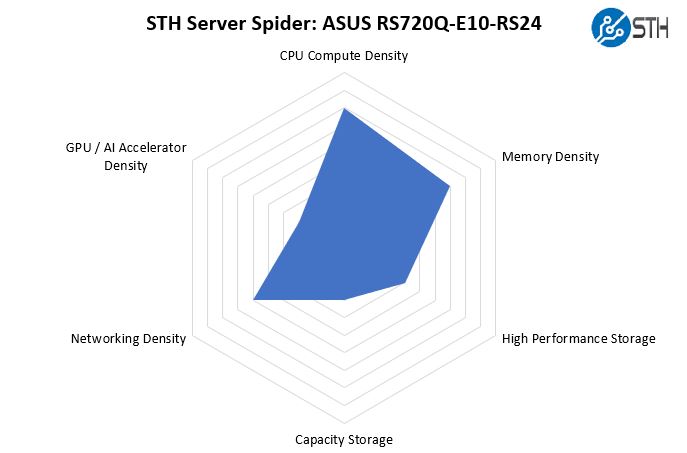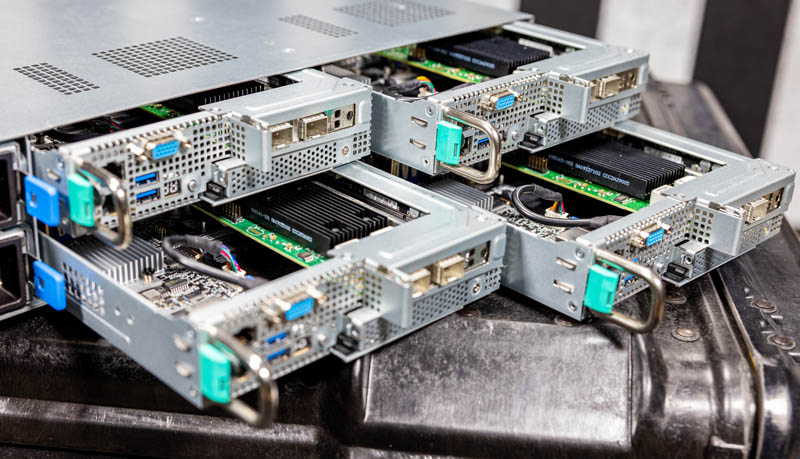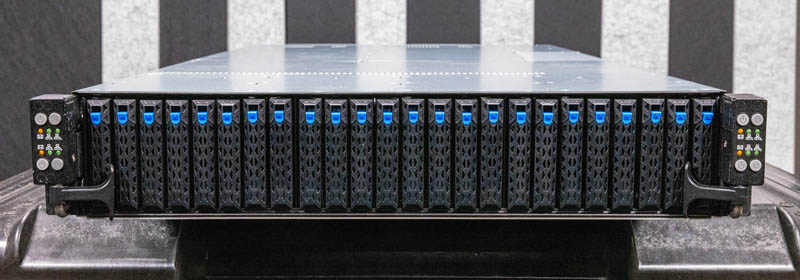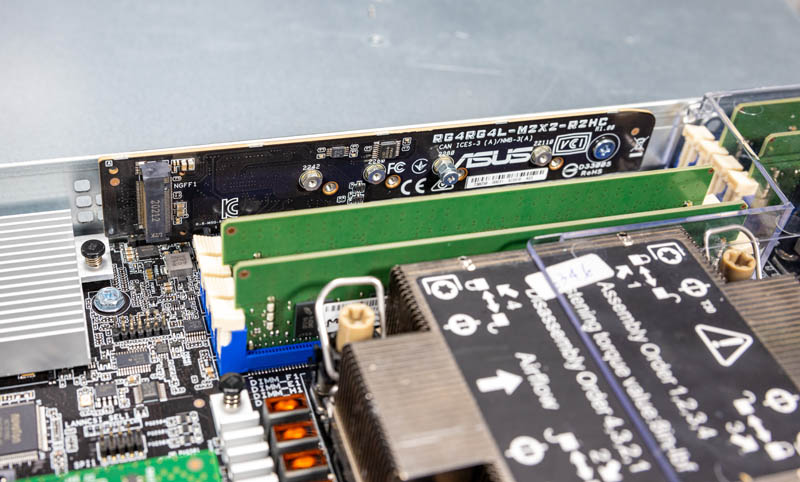STH Server Spider: ASUS RS720Q-E10-RS24
In the second half of 2018, we introduced the STH Server Spider as a quick reference to where a server system’s aptitude lies. Our goal is to start giving a quick visual depiction of the types of parameters that a server is targeted at.

This is a good example of where the STH Server Spider helps us understand the differences between servers. For example, we get higher compute density because we have a 2U 4-node chassis. In terms of storage, we get a mix of 2.5″ bays. While one may be tempted to use something like an NVIDIA A2 AI inference card in these servers, this is clearly also not a platform for GPU compute. It does, however, have two PCIe slots and one is an OCP NIC 3.0 slot so there is the potential for solid networking density.
All told, this system is really designed to bring CPUs online inexpensively. While we see other systems incur more costs to bring online more features, many market segments do not want that trade-off. That is precisely what ASUS is targeting here.
Final Words
Overall, this is one of those servers where we have now used three generations, so we have a very solid sense of the market segmentation. Many of the 2U4N servers we review are trying to emulate 1U rackmount servers with extensive features. ASUS’s design in this segment is really around value.

Using generations of these servers also means we see some common features. For example, the drive trays with screws and even the small handles on the front of the chassis we have seen for generations now.

At the same time, upgrades such as the BMC to the AST2600 for ASMB10-iKVM management, Ice Lake Xeons with PCIe Gen4 and more memory channels, an OCP NIC 3.0 slot, as well as smaller features like moving the M.2 boot location are all great upgrades.

Again though, this is a server designed for heavy cost optimization. As a result, we are seeing a platform evolve more along that optimization than features such as making tool-less everything for servicing. That is also ASUS’s key market segment for the line and has been for years so this is expected. Indeed, one thought that I constantly had while taking apart this server was simply how this feels so much like the servers we have used in the lab for years. For those looking to have inexpensive and dense nodes, this is certainly a good option as that is the exact reason we have been using this line of servers for years in the STH lab.



